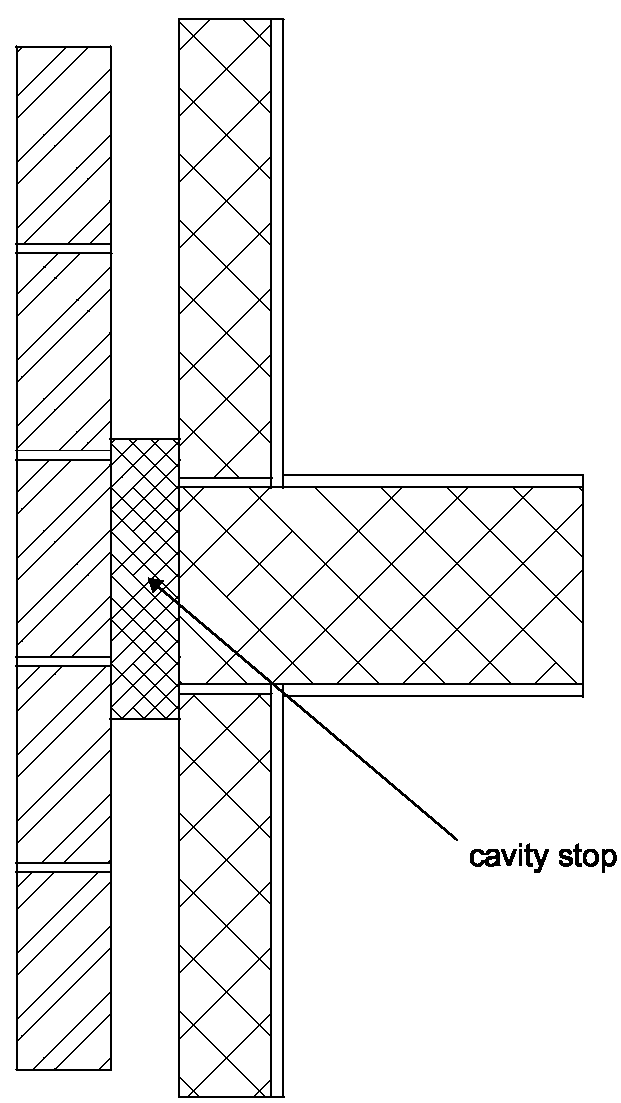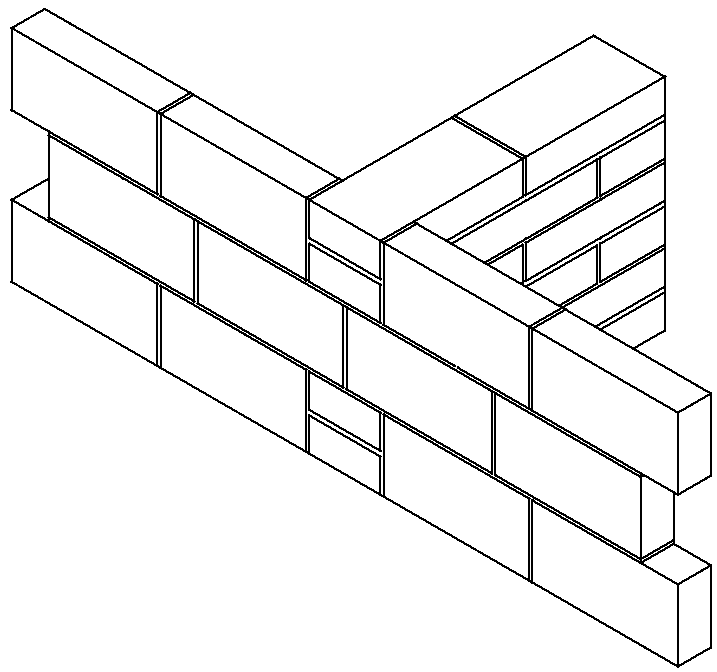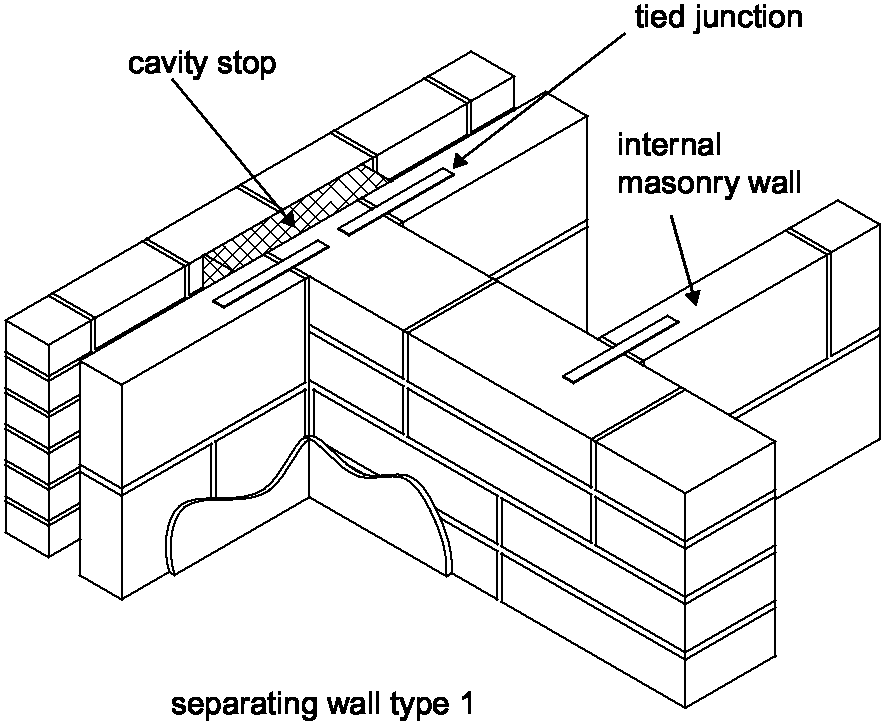
Diagram 2-5: Wall type 1 – external cavity wall with masonry inner leaf

Diagram 2-6: Wall type 1 – bonded junction – masonry inner leaf of external cavity wall with solid separating wall

Diagram 2-7: Wall type 1 – tied junction – external cavity wall with internal masonry wall

Diagram 2-8: Wall type 1 – position of openings in masonry inner leaf of external cavity wall

2.40 Where the external wall is a cavity wall:
2.41 Where the inner leaf of an external cavity wall is of framed construction, the framed inner leaf should:
Resistance to the passage of sound 21